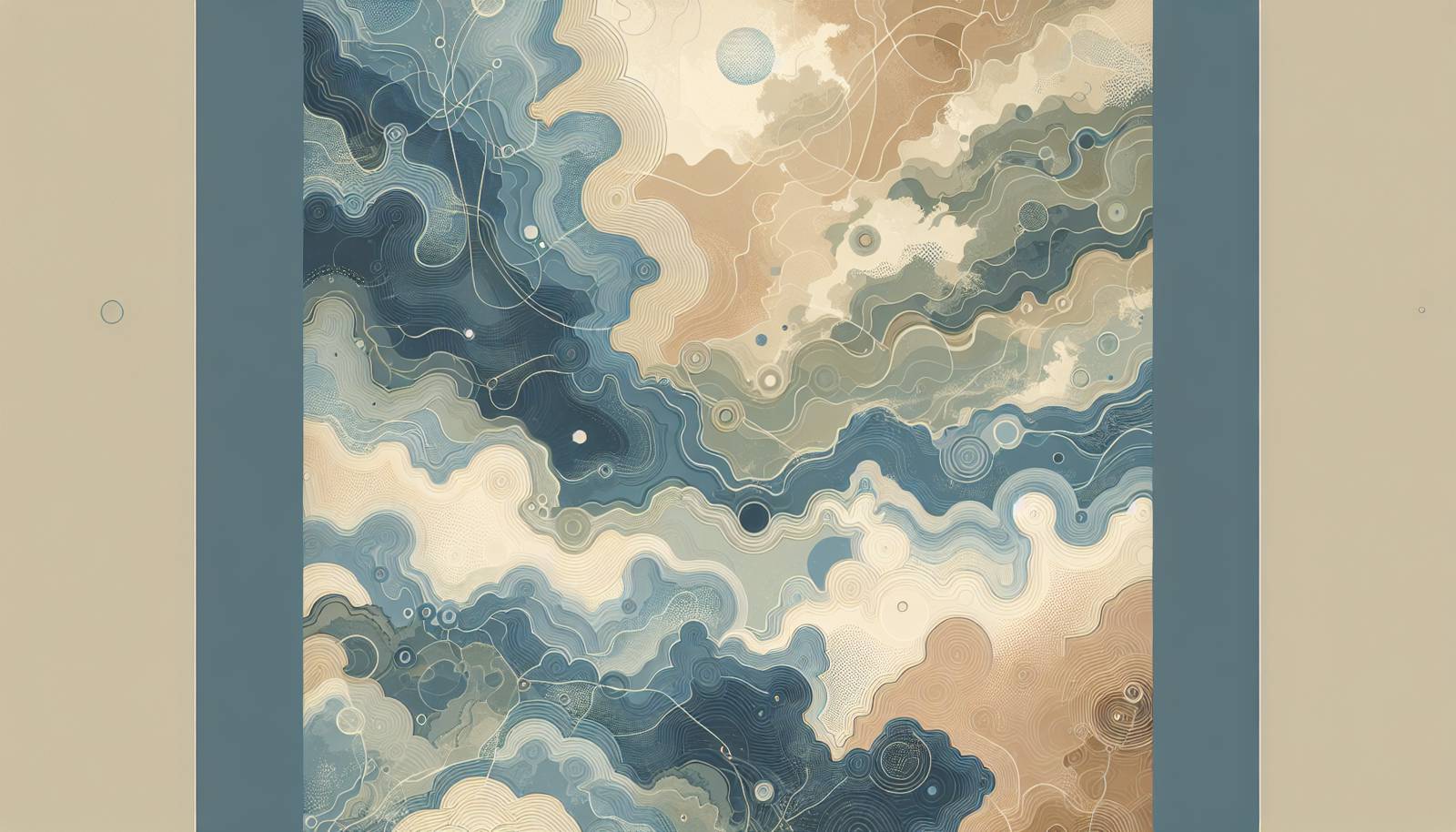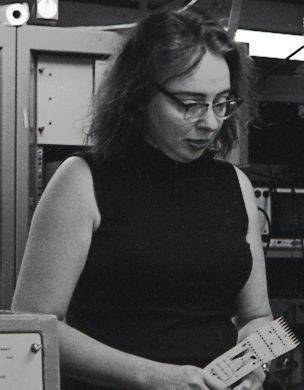
FAQ About Marie Tharp

Who was Marie Tharp?
Marie Tharp was a pioneering geologist and oceanographic cartographer born on July 30, 1920, in Ypsilanti, Michigan. She is best known for her work in mapping the ocean floor, which contributed significantly to the understanding of plate tectonics. Her detailed maps of the Atlantic Ocean floor revealed the presence of the Mid-Atlantic Ridge, providing crucial evidence for the theory of continental drift.

What are some of Marie Tharp's most significant contributions to geology?
Marie Tharp's most significant contributions include the creation of the first scientific map of the ocean floor, which revealed the global mid-ocean ridge system. Her work provided the first clear evidence supporting the theory of plate tectonics and continental drift, fundamentally changing how we understand Earth's geology.

How did Marie Tharp create maps of the ocean floor?
Marie Tharp created maps of the ocean floor by interpreting data collected from echo soundings, a process that uses sonar equipment placed on ships to measure the depth of the ocean. She meticulously analyzed these data points and translated them into detailed two-dimensional drawings, which depicted the topography of the ocean basin.

Why was Marie Tharp's work initially met with skepticism?
Marie Tharp's work was initially met with skepticism primarily because it challenged the prevailing geologic theories of the time. The concept of continental drift was controversial, and many geologists were reluctant to accept that the ocean floor was actively spreading. In addition, Tharp faced gender biases that questioned the credibility of her findings.

What impact did Marie Tharp's map of the ocean floor have on scientific research?
Marie Tharp's map of the ocean floor had a profound impact on scientific research by providing concrete evidence of the mid-ocean ridge and seafloor spreading. This evidence was instrumental in gaining acceptance for the theories of plate tectonics and continental drift, leading to a seismic shift in geological science and influencing numerous other fields such as oceanography and climatology.

What challenges did Marie Tharp face in her career?
Throughout her career, Marie Tharp faced several challenges, including gender discrimination in a male-dominated field. She was often excluded from fieldwork and onboard ship research expeditions. Despite these barriers, she persevered and continued her groundbreaking work from the laboratory, compiling and analyzing oceanographic data sent by her colleagues.

What is the Mid-Atlantic Ridge, and how did Marie Tharp contribute to its discovery?
The Mid-Atlantic Ridge is a continuous mountain range running along the floor of the Atlantic Ocean, marking a boundary between tectonic plates. Marie Tharp contributed to its discovery by mapping the topography of the ocean floor, revealing the Ridge's existence, and providing evidence for seafloor spreading, a critical component of plate tectonic theory.

How has Marie Tharp's work influenced modern geology?
Marie Tharp's work has had a lasting influence on modern geology by paving the way for the acceptance of plate tectonics as a unifying theory. Her pioneering efforts in seafloor mapping have set a standard for modern oceanographic studies and have inspired subsequent generations of geologists and oceanographers to explore and understand Earth's geological processes.

What is plate tectonics, and how did Marie Tharp contribute to its understanding?
Plate tectonics is the scientific theory that describes the large-scale motion of Earth's lithosphere, which is divided into tectonic plates. Marie Tharp contributed to its understanding by creating the first comprehensive maps of the ocean floor, which clearly illustrated features such as the Mid-Atlantic Ridge and other underwater mountain ranges, supporting the mechanism of seafloor spreading.

Did Marie Tharp work alone on her ocean floor maps?
No, Marie Tharp worked in collaboration with Bruce Heezen, a geologist she partnered with at Columbia University. While Heezen gathered much of the data through oceanographic expeditions, Tharp was responsible for the interpretation and creation of the maps. Together, they published significant findings that transformed geoscientific understanding.

How did Marie Tharp's background and education influence her work?
Marie Tharp's background and education played a crucial role in her career. She earned degrees in English, Music, and Geology, which equipped her with a diverse set of skills useful in her detailed mapping work. Her strong foundation in geology helped her in understanding complex geological data, making her a skilled mapmaker and interpreter of oceanographic findings.

What recognition did Marie Tharp receive for her contributions to geology?
Despite the initial resistance to her work, Marie Tharp eventually received significant recognition for her contributions. In 1997, she was honored with the Society of Women Geographers' Outstanding Achievement Award. Her work continues to be celebrated, reflecting her vital role in advancing our understanding of Earth's geology.

How did Marie Tharp overcome the challenges faced due to gender discrimination in her field?
Marie Tharp overcame gender discrimination by focusing on her work and developing supportive collaborations, particularly with Bruce Heezen, who valued her cartographic skills. Although she faced exclusion from many research expeditions and was often underestimated, her meticulous and groundbreaking contributions eventually gained respect and acknowledgment from the scientific community.

What are echo soundings, and how did they contribute to Marie Tharp's work?
Echo soundings are a method used to determine the depth of water by sending sound waves from a ship to the ocean floor and measuring the time it takes for the echoes to return. This technology provided the data points that Marie Tharp used to create her detailed maps of the ocean's topography, allowing her to visualize and illustrate underwater geological features.

How has Marie Tharp's work been preserved or displayed for educational purposes?
Marie Tharp's work has been preserved through publications and archived collections, and is often showcased in exhibitions dedicated to the history of oceanography and geology. Her maps and findings are displayed in museums and educational institutions worldwide, serving as valuable resources for students and researchers.

Why is Marie Tharp considered a trailblazer for women in science?
Marie Tharp is considered a trailblazer for women in science due to her significant breakthroughs in oceanography and geology achieved in the face of gender-based challenges. Her success and perseverance in a male-dominated field have inspired and paved the way for future generations of women scientists to pursue careers in the Earth sciences and beyond.

What technological advancements have been made since Marie Tharp's mapping of the ocean floor?
Since Marie Tharp's pioneering work, there have been significant technological advancements in ocean mapping, including satellite altimetry, multibeam sonar, and autonomous underwater vehicles. These innovations allow for more accurate, comprehensive, and high-resolution mapping of the ocean floor, building upon the foundational work of Tharp's era.

Did Marie Tharp contribute to any theories beyond plate tectonics?
While Marie Tharp is best known for her contribution to the theory of plate tectonics, her comprehensive mapping of the ocean floor also advanced the understanding of various oceanographic and geological phenomena, such as underwater eruptions, sediment deposition patterns, and ocean basin formation.

How did Marie Tharp's partnership with Bruce Heezen function?
Marie Tharp's partnership with Bruce Heezen was based on a complementary division of labor, where Heezen focused on ocean data collection during expeditions while Tharp concentrated on compiling and interpreting the data into accurate maps. Their collaboration was critical in bringing about the revolutionary maps that altered the scientific insights into earth sciences.

What role do Marie Tharp's maps play in today's science?
Marie Tharp's maps continue to serve as a foundation in the study of oceanography and geology. They are used as educational tools to illustrate the basic concepts of plate tectonics and mid-ocean ridges. Her work remains a testament to the importance of interdisciplinary approaches and meticulous scientific inquiry in uncovering the complexities of Earth's processes.
